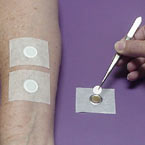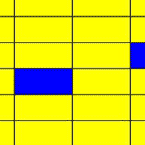
Suppression of Candida Biofilms with Iodide Oral Rinse-2007
Objective: The purpose of this experiment was to determine the inhibitory effectiveness of several Iocide Oral Rinse formulations (OR) in the metabolic activities of cells in Candida albicans biofilms as assessed by XTT assay.
Methods: Candida albicans (ATCC# SC5314) was propagated, washed 3X by PBS and suspended to 1×106 cells/ml in RPMI. One-tenth ml aliquots of the cell suspension were seeded to wells of 96 well microtiter plates…



